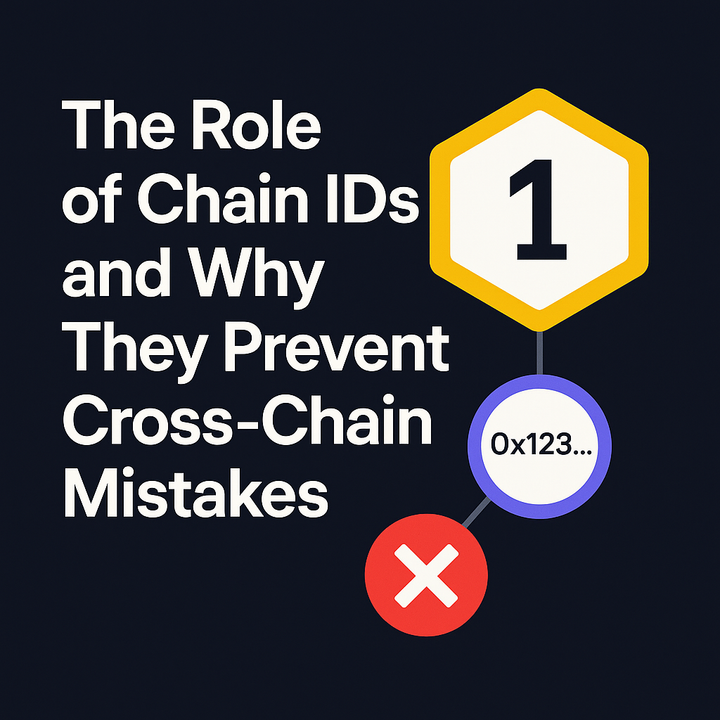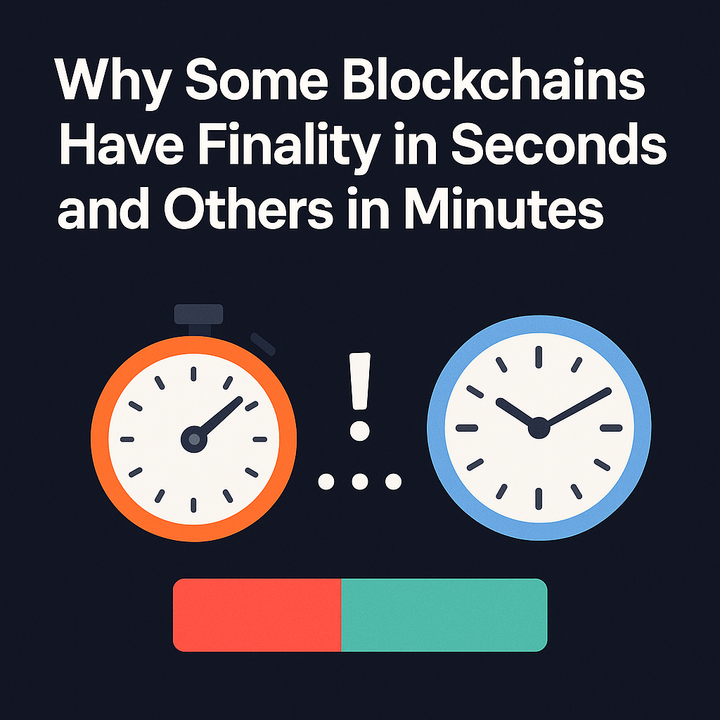The Perfect Storm in Web3: How Mitosis Found Itself at the Epicenter of Three Revolutionary Trends

1. Introduction: Technological Revolutions Don't Happen in a Vacuum
Great technological breakthroughs rarely occur in isolation. More often, they happen at a point of convergence – when several powerful, independent trends come together, creating the conditions for something entirely new and necessary to emerge. The steam engine didn't change the world on its own, but in combination with advancements in metallurgy and the needs of the industrial revolution. The smartphone became possible due to the simultaneous development of mobile networks, touch screens, and processor miniaturization.
Today, in the world of Web3, we are witnessing just such a "perfect storm." Three giant tectonic plates have shifted at the same time, drastically changing the landscape and creating an acute, unprecedented need for a new generation of infrastructure solutions. These three trends are:
- The Explosive Growth of L2s and Appchains: The multichain future has arrived, creating a problem of mass fragmentation.
- The Restaking Revolution: EigenLayer has provided the technology for truly secure inter-network communication.
- The Emergence of New Asset Classes: Liquid Staking and Restaking Tokens (LSTs/LRTs) have become the dominant form of capital in DeFi.
The protocols that find themselves at the epicenter of this storm, able to harness the power of each of these trends and solve the problems they create, will become the fundamental infrastructure for the next era of Web3. And Mitosis, a cross-chain liquidity protocol, is in this unique position.
Trend 1: The Explosion of L2s and Appchains – The Great Fragmentation
We no longer live in an Ethereum-centric world. Layer 2 ecosystems (Arbitrum, Optimism, Base, zkSync) and specialized appchains (dYdX Chain, etc.) are growing exponentially. This solves the scalability problem but creates a new, even more acute one – mass fragmentation. Liquidity, users, and dApps are now scattered across hundreds of isolated "islands." How do we ensure connectivity in this new world?
Trend 2: The Restaking Revolution – The Advent of Robust Security
For a long time, cross-chain bridges were the "Achilles' heel" of Web3, vulnerable to hacks. The emergence of EigenLayer and Actively Validated Services (AVS) changed the game. Now, protocols can "rent" the economic security of Ethereum to protect their operations. This has made it possible, for the first time in history, to create truly secure and decentralized bridges, protected by billions of dollars.
Trend 3: New Asset Classes – The Demand for LRT Liquidity
The restaking ecosystem has given rise to a new class of highly productive assets – Liquid Restaking Tokens (LRTs). These tokens (eETH, pufETH, etc.) represent staked and restaked ETH and are becoming the primary collateral asset in DeFi. But these LRTs, like other assets, are also fragmented across various L2s and DeFi protocols. A huge demand is emerging for the ability to securely and efficiently move these valuable assets between networks to maximize yield.
Mitosis: At the Intersection of Three Roads
Mitosis doesn't just follow one of these trends. Its architecture and strategy are positioned precisely at their intersection, making it a timely and critically important solution right now:
- It directly solves the fragmentation problem (Trend 1) created by the L2 explosion.
- It uses restaking technology (Trend 2) to provide the highest level of security that the market demanded.
- It provides the necessary infrastructure for moving new assets (Trend 3), such as LRTs, between networks.
Mitosis is not just a good idea in a vacuum. It is a response to the "perfect storm" of needs and opportunities that has formed in Web3 in 2024-2025.
What Will You Learn From This Article?
In this article, we will explore in detail how Mitosis leverages this unique convergence of three mega-trends to create its value proposition:
- How Mitosis uses AVS to solve the security problem that hindered L2 interaction.
- How Mitosis's EOL model meets the demand for liquidity for LRTs and other assets in the fragmented L2 landscape.
- Why now, at the moment of this "perfect storm," a protocol like Mitosis becomes not just "another bridge," but an indispensable part of the infrastructure for the next stage of Web3 growth.
We will show that Mitosis's success is driven not only by its technology but also by its perfect alignment with the current moment in the evolution of the decentralized internet.
2. Mitosis as the Response to the Perfect Storm
Positioned at the intersection of three powerful trends, Mitosis doesn't just exist in the new environment – it harnesses the energy of each to create a unique and synergistic solution. Let's see exactly how Mitosis's architecture addresses the challenges and opportunities created by this "perfect storm."
1. Solving the Fragmentation Problem (Trend #1) with EOL
In a world of thousands of L2s and appchains, simple message passing doesn't solve the main problem – the lack of liquidity. A user who wants to transfer 100 LRTs from chain A to chain B needs more than just a simple confirmation. They need a guarantee that there is liquidity for their asset on chain B so they can use it.
- How Mitosis Responds: The Ecosystem-Owned Liquidity (EOL) model becomes a key advantage here.
- Liquidity Seeding: Mitosis can proactively deploy its EOL in the most promising and fastest-growing L2s, providing baseline liquidity for popular assets, including new LRTs.
- Reducing LP Dependence: The protocol doesn't wait for third-party liquidity providers (LPs) to manually move their funds to a new network. It can be the first and most reliable LP itself.
- Asset Unification: EOL helps combat the problem of multiple "wrapped" versions of the same token by offering users canonical or native liquidity on the destination chain.
Synergy: Mitosis uses the fragmentation created by L2s as an opportunity, offering a solution (EOL) that makes it an indispensable partner for the growth of these new ecosystems.
2. Leveraging Restaking (Trend #2) to Ensure Trust
The fragmentation problem couldn't be solved earlier because there was no sufficiently reliable way to secure inter-network interactions. Bridge hacks were a constant threat.
- How Mitosis Responds: Mitosis directly integrates the most advanced solution to this problem – security based on EigenLayer AVS.
- Cryptoeconomic Security: Instead of relying on a small group of validators, Mitosis is secured by the economic stake of ETH. This provides the highest level of security necessary for moving high-value assets like LRTs.
- Building Trust: For users, "points farmers," and DeFi protocols moving significant capital, the presence of restaking-based security is a decisive factor. It allows them to trust Mitosis with their funds to participate in a wide variety of activities across the L2 space.
Synergy: Mitosis uses restaking technology to provide a level of security that, in turn, makes it possible to effectively solve the problem of liquidity fragmentation. One would be incomplete without the other.
3. Providing Liquidity for New Assets (Trend #3)
The growing popularity of Liquid Restaking Tokens (LRTs) has created a huge demand for their cross-chain movement. Users want to use their LRTs (which simultaneously earn Ethereum staking yield and EigenLayer points) in DeFi protocols on various L2s to gain additional yield or points from other projects.
- How Mitosis Responds: Mitosis becomes the ideal infrastructure for the "LRT economy."
- Secure Transport for LRTs: The high security of Mitosis makes it the perfect choice for moving these valuable and complex assets.
- Liquidity for LRT Operations: EOL can include pools with LRTs, ensuring low slippage and efficient swaps between different LRTs or between LRTs and other assets (like stablecoins) on different networks.
- A Tool for "Points Farmers": For users participating in the "points meta," Mitosis becomes an indispensable tool, allowing them to quickly and securely move capital between EigenLayer, Blast, Zircuit, and dozens of other protocols and L2s, maximizing their potential rewards.
Synergy: Mitosis leverages the demand created by new assets (LRTs) and provides a secure and liquid infrastructure for them, becoming a central element for a new generation of DeFi strategies.
Conclusion: Mitosis – A Timely Response to Evolutionary Challenges
The "perfect storm" in Web3 is not chaos, but a moment of incredible opportunity for those ready to offer the right solutions. The convergence of explosive L2 growth, the restaking revolution, and the emergence of new asset classes has created an acute and clear need for a protocol that can:
- Unify fragmented liquidity.
- Provide the highest level of security for this unification.
- Support the new, most in-demand types of assets.
Mitosis, with its unique combination of Ecosystem-Owned Liquidity (EOL) and EigenLayer AVS-based security, has turned out to be precisely such a protocol. It doesn't just solve one of these problems – it sits at their intersection, using solutions from one area to overcome challenges in another.
Therefore, Mitosis is not just another project in a line of innovations. It is a timely and necessary response to the current stage of Web3's evolution. It provides the critical infrastructure that allows all other trends – modularity, restaking, DeFi 2.0 – to reach their full potential. It is this positioning at the epicenter of the "perfect storm" that makes Mitosis one of the most strategically important projects in modern Web3.
Learn more about Mitosis:
- Explore details on the official website: https://www.mitosis.org/
- Follow announcements on Twitter: https://twitter.com/MitosisOrg
- Participate in discussions on Discord: https://discord.com/invite/mitosis
- Read articles and updates on Medium: https://medium.com/mitosisorg
- Blog: https://blog.mitosis.org/



Comments ()